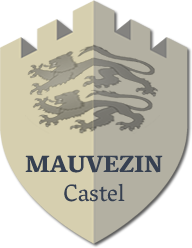Nebouzan
Nebouzan was a viscounty formed in 1240 out of some detached territories from Comminges. It was made up of several enclaves situated in today’s Hautes-Pyrénées and Haute-Garonne departments.
In 1232, Gaston VII, Viscount of Béarn, inherited lands in Comminges from his mother: Balesta, Blajan, Larroque, Lespugue, Nizan, Saint-Plancard, Sarrecave, and Sarremezan. These parishes were detached from the County of Comminges around 1240 in order to create the Viscounty of Nebouzan.
The House of Foix-Béarn inherited Nebouzan through marriage and, as a result, Nebouzan became the object of many rivalries between the Houses of Comminges, Armagnac, and Foix-Béarn during inheritance conflicts, especially in 1263 and 1302. Saint-Gaudens and Miramont had been the property of the House of Foix-Béarn since 1225.
In 1271, the fiefdom of Aulon was incorporated into Nebouzan. In 1345, Gaston Febus and his mother bought Lannemezan, Escala, Pinas, Tuzaguet, Lagrange, and Luthilous from Géraud d’Aure. These parishes were re-attached to the fiefdoms of Cassagnabère and Aulon.
In 1373, the Duke of Anjou laid siege to the Mauvezin Castle. He re-attached Lutihous to it and gave both estates to the Count of Armagnac. It was the beginning of a new war between the Count of Armagnac and Gaston Febus. It ended with the peace treaty signed in Tarbes in 1377, which gave Febus the viguerie of Mauvezin and the fiefdom of Goudon in 1379.
- clergy (presiding abbot of Nizors, abbots of Bonnefont and Escaladieu, representative of the college of canons from Saint-Gaudens);
- nobility (eight barons including La Roque, Ramefort and Rodets, twelve lords and intendants from the castles of Miramont, Mauvezin, Saint-Plancard, and Lannemezan);
- Third Estate, for which stood the consuls of Saint-Gaudens and 57 other communities.






